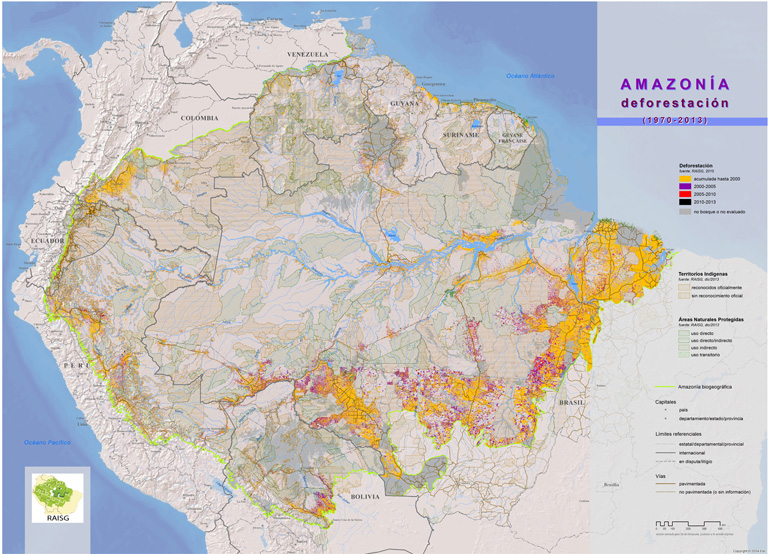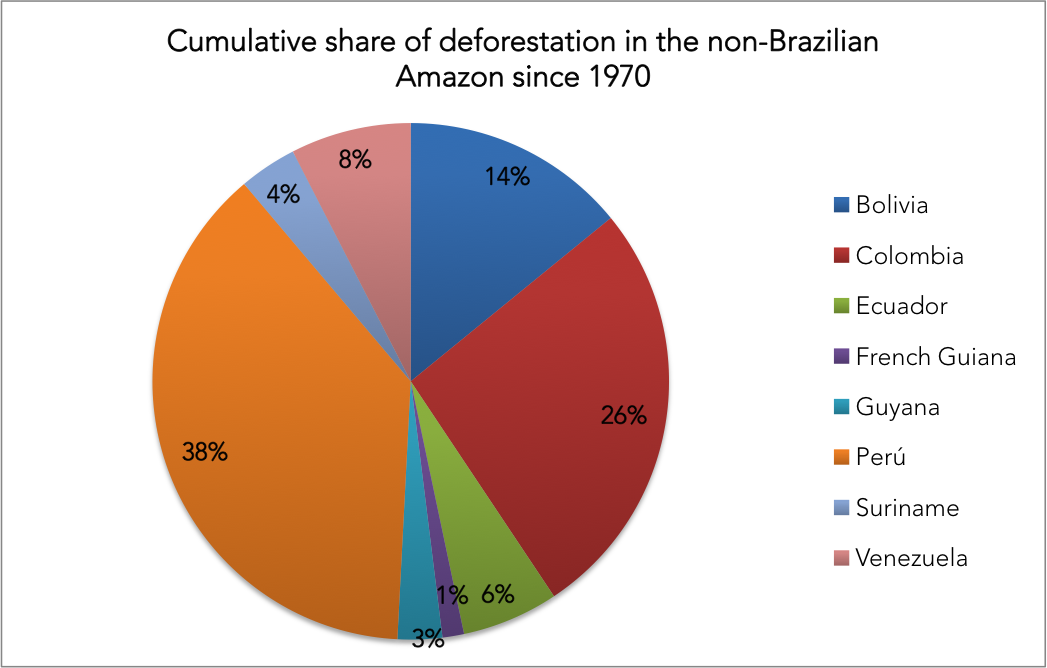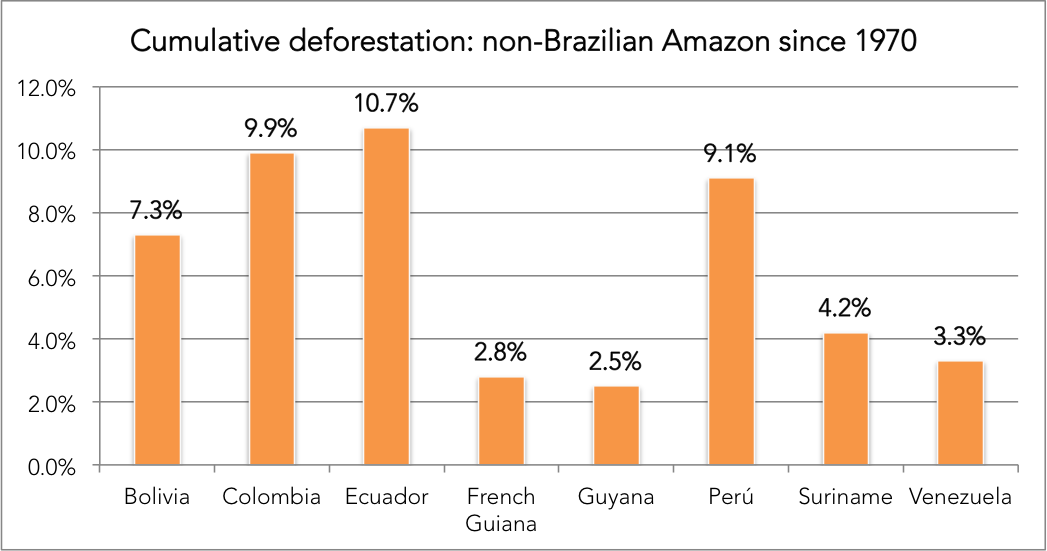Destruction of primary forests across the Amazon basin has declined significantly since the 2000s, finds research published Monday by a group of Latin American social and environmental organizations known as The Amazonian Network of Georeferenced Socio-Environmental Information (RAISG).
The study, released as a report with a detailed map of deforestation, indicates that deforestation between 2010 and 2013 fell sharply both inside and outside the Brazilian Amazon. The findings are significant because they are the first to document change in primary forest in the Amazon outside of Brazil.
The decline in Brazil’s deforestation has been widely reported due to the country’s advanced monitoring system. Less well-known is the trend in non-Brazilian countries.
Data for those countries from other sources, like the U.N. and Global Forest Watch, do not break down forest loss by biome or look only at gross and net forest loss, rather than deforestation specifically.
“The Global Forest Watch data includes forest changes including secondary growth forests and plantations; the RAISG report change is primary forests,” said Carlos Souza of Imazon, a Brazilian NGO that is one of the partners in the research.
The report, which is available in Spanish, shows that average annual deforestation in Bolivia, Colombia, Ecuador, Guyana, Peru, and Suriname fell significantly for the 2010-2013 period relative to 2005-2010. Only Venezuela and French Guiana experienced increases in deforestation. The trend in Venezuela was particularly troubling, rising steadily since 2000.
Overall, annual deforestation across the non-Brazilian Amazon fell 55 percent from an average of 11,480 square kilometers to 5,132 sq km. Including Brazil, the average annual rate dropped 49 percent from 15,562 sq km to 7,970 sq km.
The report details forest loss within each country, discussing drivers of deforestation and recent developments related to forests. Drivers vary from country to country, but large-scale agriculture and cattle ranching, logging, and extractive industries are major contributors to primary forest loss and degradation.
The report also estimates historic forest cover and accumulated deforestation since 1970, concluding that 13.3 percent of Earth largest rainforest was cleared during that time. On both a relative and absolute basis, Brazil led all Amazon countries in deforestation with 17.6 percent, although its annual rate of loss slowed by 75 percent since the early 2000s. Peru (65,848 sq km), Colombia (45,970 sq km), and Bolivia (24,431 sq km) follow.
The data is based on analysis of satellite imagery using a standardized methodology by the seven RAISG affiliates: FAN (Bolivia), ISA and IMAZON (Brazil), Gaia Amazonas (Colombia), EcoCiencia (Ecuador), IBC (Peru) and Provita (Venezuela).








